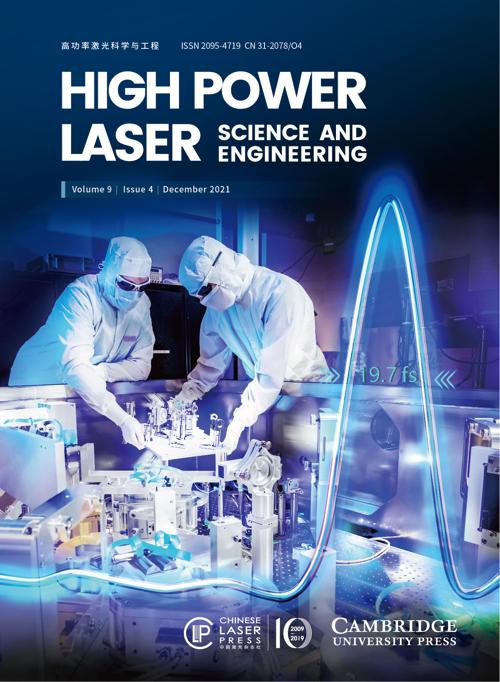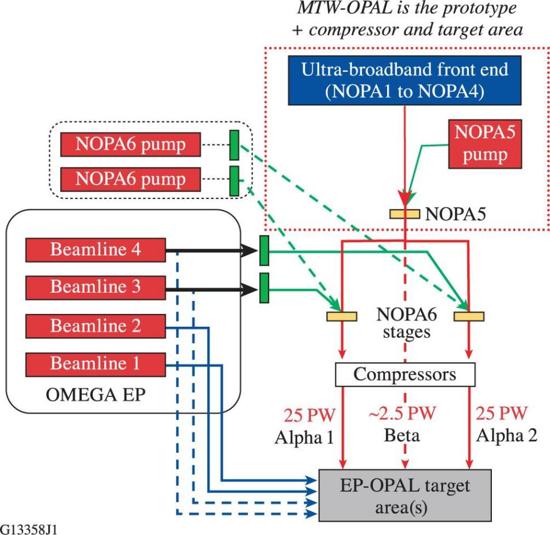Ultra-intense lasers are enabling scientists to reach new regimes for transformational scientific discovery. Shortly after the laser was invented 60 years ago, scientists saw the potential for producing very bright beams of light. In particular, the high spatial coherence of the lasers enables them to be tightly focused in space. Later, scientists developed broadband lasers with high spectral coherence, enabling pulses to be formed that had very short durations. In the mid-1980s, the invention of chirped-pulse amplification enabled researchers to produce high-energy pulses that can be focused to very high intensities. For this "groundbreaking invention," the inventors were awarded the 2018 Nobel Prize in Physics.
In fact, the electromagnetic fields produced at such foci easily exceed the forces that hold atoms together and the fields are strong enough to accelerate the subatomic particles to relativistic velocities. Ultra-intense lasers, therefore, provide optical pulses that enable new states of matter to be studied. Furthermore, such lasers can be used to produce secondary sources of high-energy particle radiation—electrons, protons, and other high-energy photons such as gamma rays—that, in turn, can be used for research. This exciting potential has led to a rapid expansion in the number and scale of ultra-intense laser facilities around the globe, as summarized in the latest review by Danson et al. HPLSE 7, e54 (2019). Facilities are now operational that routinely provide petawatt pulses (1015 W) that can be focused to intensities approaching 1023 W/cm2, producing electromagnetic fields many orders of magnitude higher than those holding atoms together. Indeed, one scientific dream for these systems is to be able to produce fields so intense that they can force apart electron–positron pairs that spontaneously form in vacuum before they recombine, leading to showers of particles out of the vacuum.
In the paper published on High Power Laser Science and Engineering Vol. 9, Issue 4, researchers from University of Rochester, USA report on MTW-OPAL, a new optical parametric amplifier line (OPAL) that has been activated for ultra-intense laser development and science experiments (J. Bromage, S.-W. Bahk, M. Bedzyk, et al. MTW-OPAL: a technology development platform for ultra-intense optical parametric chirped-pulse amplification systems[J]. High Power Laser Science and Engineering, 2021, 9(4): 04000e63), and is selected as cover paper.

A mid-scale prototype, it was designed to produce 0.5-PW pulses with technologies scalable to tens of petawatts. A key subsystem is the large-aperture noncollinear optical parametric amplifier (NOPA), the fifth one in the amplifier chain. Deuterated potassium dihydrogen phosphate (DKDP) crystals are pumped by the Nd-doped portion of the neighboring Multi-Terawatt (MTW) laser to produce 11-J pulses with >150 nm of bandwidth, centered at 920 nm, in a 45-mm-squared beam. Such crystals can be grown to hundreds of millimeters in size, enabling broadband gain for kilojoule–femtosecond systems. In fact, MTW-OPAL is the mid-scale prototype of a proposed full-scale system, EP-OPAL, where the two of the four OMEGA EP beams are used to pump the final NOPA's for 2 × 25-PW beams that would be co-located with the other two kilojoule-nanosecond UV beams for integrated experiments.

EP-OPAL schematic showing two options for pumping the final amplifiers, NOPA6, for the two 25-PW beamlines that are seeded by a common front end.
Dr. Dustin Froula, Director of the PULSE Division at LLE and a Physics Professor at the University of Rochester, is leading the development of new science cases for this exciting capability: "EP-OPAL is the future of high-energy science science through its enabling technologies that will expand the University of Rochester's ability to address future missions by resolving ultrafast time scales and creating materials at extreme conditions while training the next generation of scientists and engineers."
Ultra-broadband transport optics, compressor gratings, and diagnostic tools compatible with the EP-OPAL system are an active area of development currently being explored using the MTW-OPAL system. The MTW-OPAL First-Light Campaign concluded with a successful demonstration of 0.35 PW peak power. Next steps include developing hardware and techniques for f/2 focusing with a deformable mirror and double plasma mirror system to achieve ultrahigh-contrast focused intensities >5 × 1021 W/cm2.


